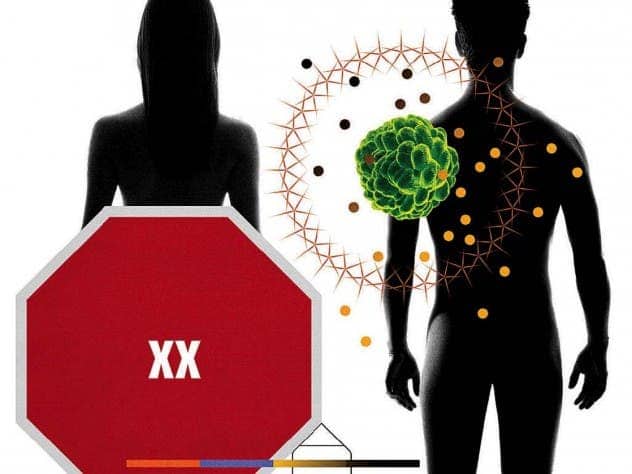
It’s no secret to oncologists that men are much more prone to cancer than women. About one in two men will develop some form of cancer in their lifetime compared to one in three women. For many years, doctors used to think this was simply because “men will be men”, meaning they are more likely to engage in risky lifestyle choices, such as drinking and smoking, as well as being more likely to encounter carcinogens due to their profession, such as in factory work.
However, lifestyle choices alone do not serve to explain this discrepancy which stands even when all other factors aside from sex are accounted for. Even pediatric cancer specialists have noted a similar male bias to cancer among babies and very young children with leukemia.
More recent studies suggest that this male bias to cancer is intrinsic, a new study published today in the journal CANCER adds more weight to this hypothesis. It found men had nearly 11 times the risk of developing esophageal cancer, as well as 3.5 times the risk of larynx, gastric, and bladder cancer compared to women even after adjusting for a wide range of risky behaviors and exposure to known carcinogenic substances.
This is a large study, which involved more than 170,000 male and 122,000 female adults aged 50 to 71 who participated in the NIH-AARP Diet and Health study from 1995–2011. Researchers led by Sarah S. Jackson of the National Cancer Institute assessed the risk for 21 different types of cancer and found that during this timeframe, 17,951 new cancers arose in men and 8,742 in women.
“Our results show that there are differences in cancer incidence that are not explained by environmental exposures alone. This suggests that there are intrinsic biological differences between men and women that affect susceptibility to cancer,” said Dr. Jackson.
Although the study is merely observational and its findings cannot determine causal relationships, the authors note that innate biological sex differences must play a major role in the cancer susceptibility of men versus women — and it may all be rooted in some inherent genetic differences.
In 2017, researchers at Harvard and MIT combed through gene-sequencing data from more than 4,000 tumors across 21 different cancers, but not prostate and ovarian cancers, which are sex-specific. Their results were startling, showing that of the approximately 800 genes active on the X chromosome, six of them more frequently mutated in men than in women. Women have two X chromosomes, whereas men have an X and Y chromosome, potentially making them more susceptible to cancer because they lack two copies of each tumor suppressor gene.
This is just one lead though. There are likely many interdependent factors that add up to produce the observed effect. To make matters even more confusing, doctors have been noticing an alarming trend in which cancer rates have been steadily decreasing in men but not in women. A 2017 report found that UK women are set to experience a rise in cancer rates up to six times faster than men, although it is still the case that many more men get cancer than women. But the gap is narrowing, largely due to an increase in womb and breast cancers attributed to a rise in obesity, as well as an increase in the rate of drinking and smoking among women since the mid-20th century.
Regardless of what exactly explains this male bias toward cancer, the fact of the matter is that men are much more likely to get cancer than women. As such, these sex disparities need to be properly addressed in clinical practice for both prevention and treatment. For instance, since they have a heightened susceptibility to cancer, men have all the more reasons to not drink and smoke, and should screen for cancer more often.






